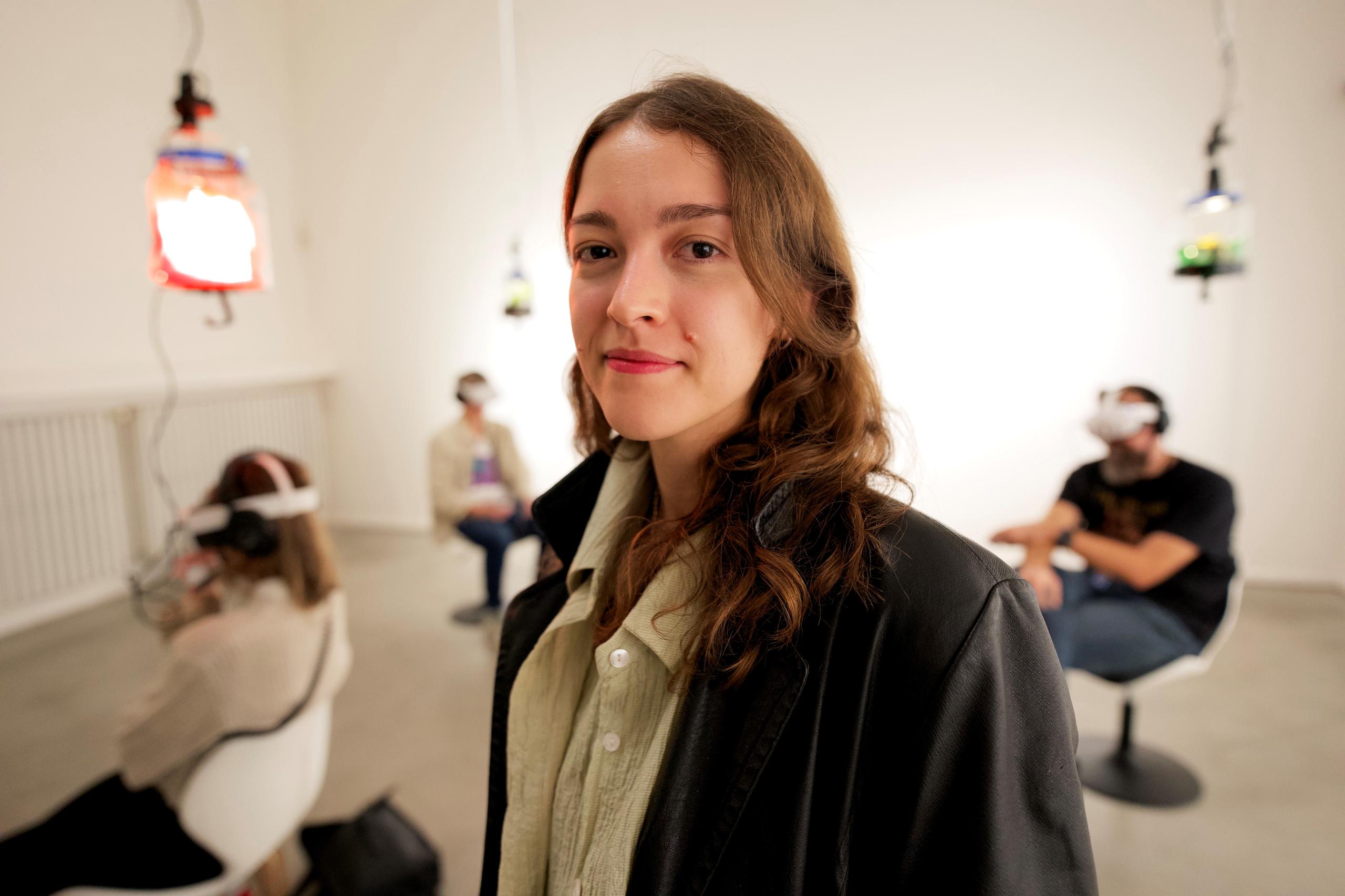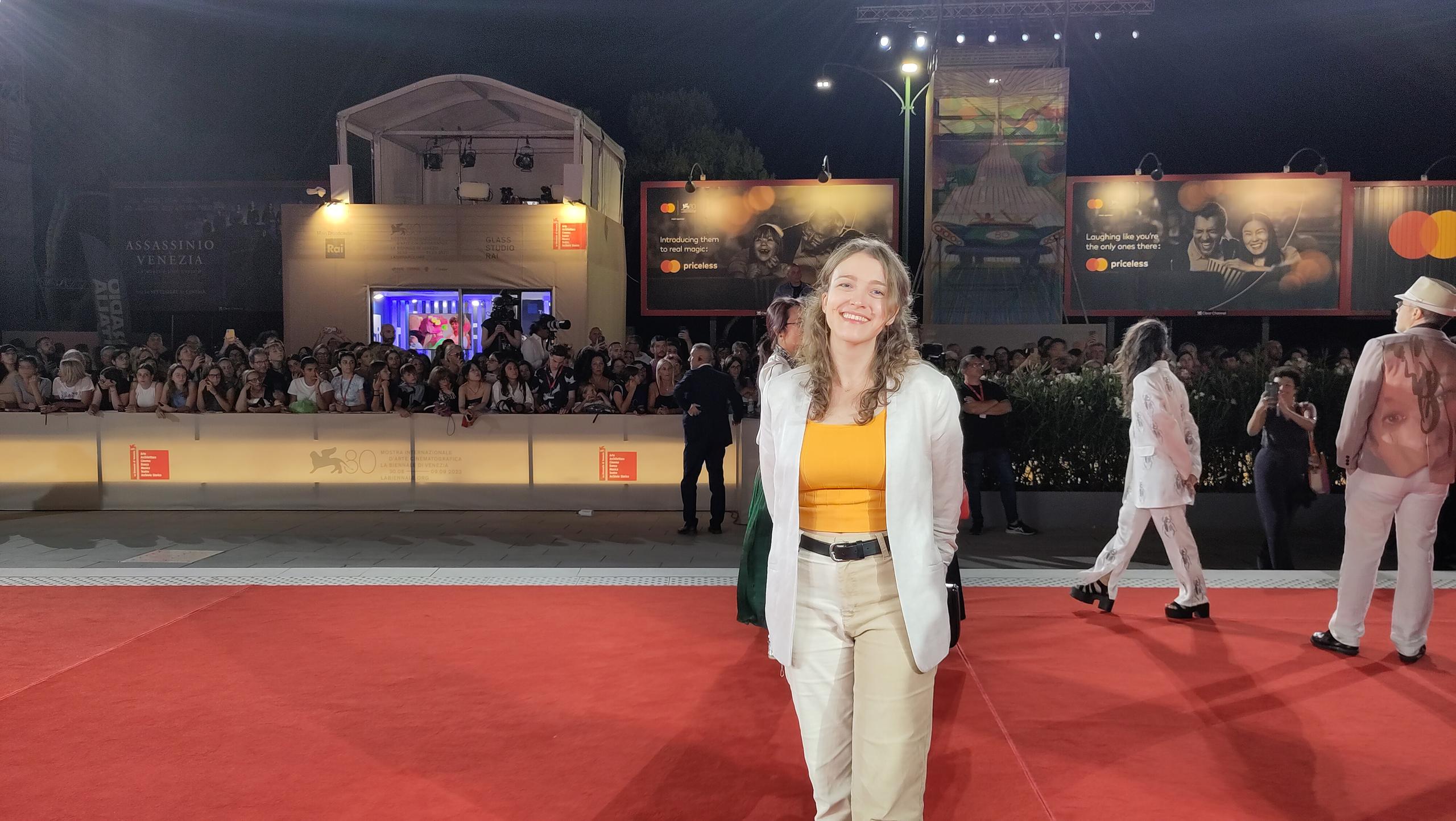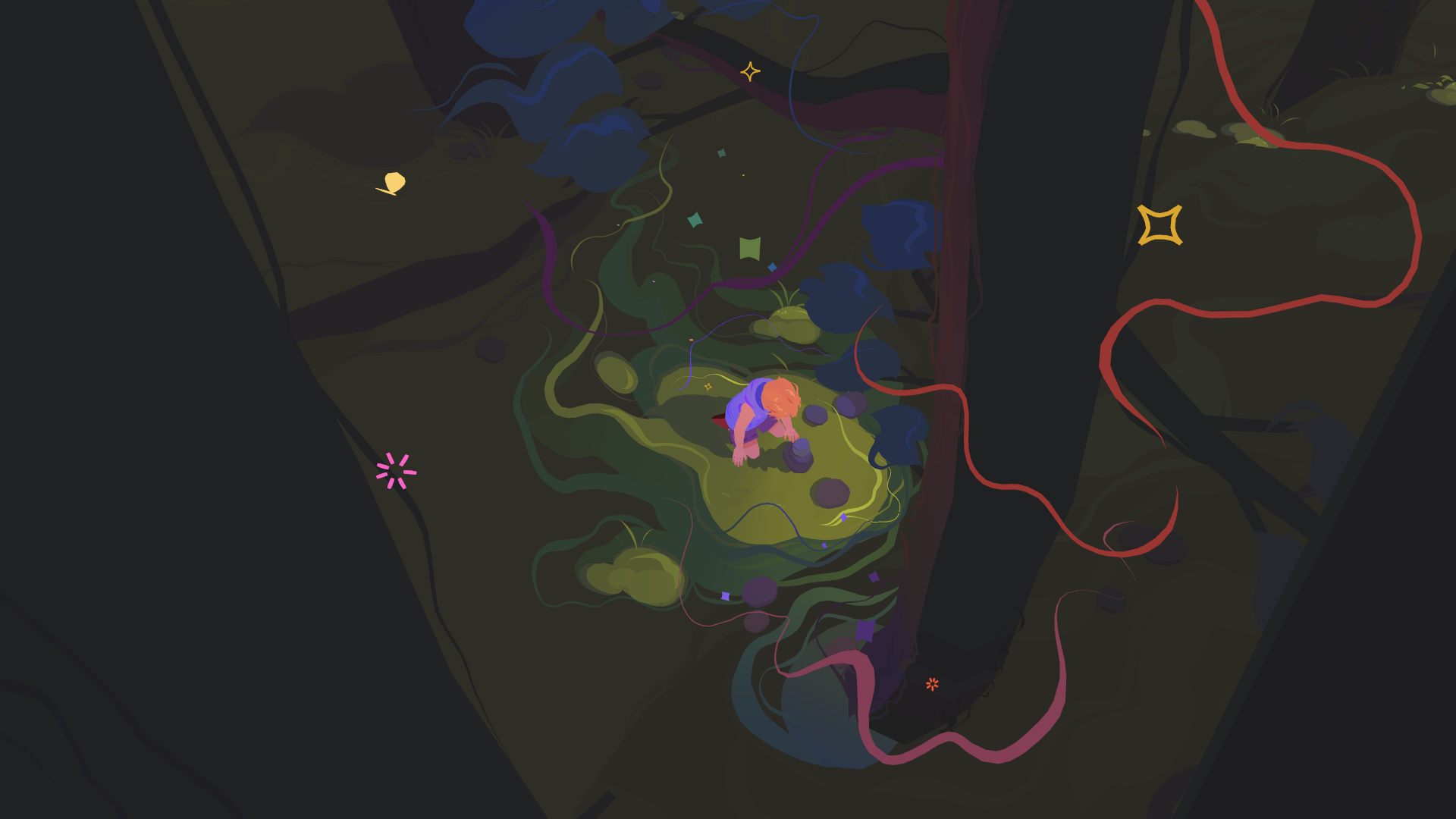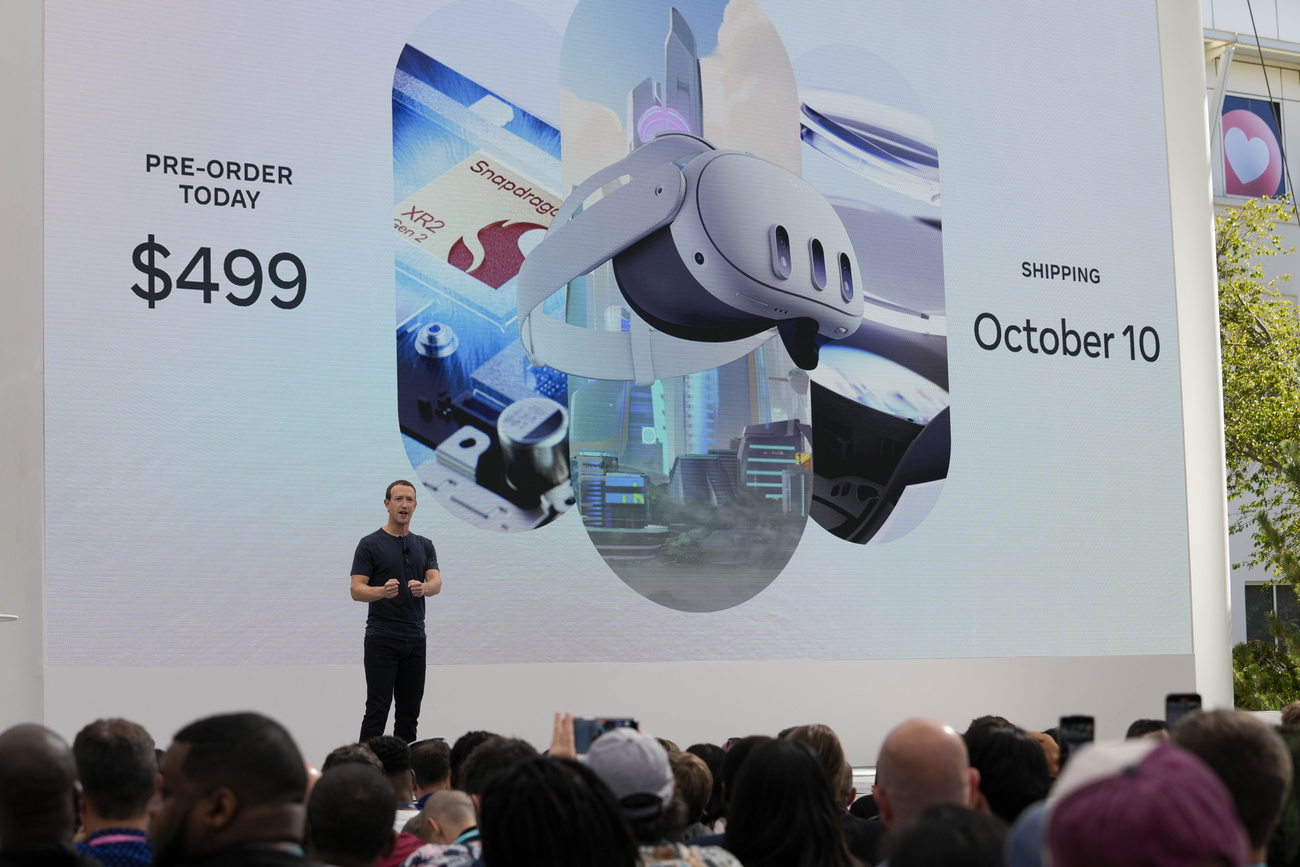Inside the headset of Swiss VR animator Zoe Roellin

Virtual reality creators in Switzerland are thriving and gaining wider recognition internationally. SWI met the Zurich-based artist Zoe Roellin in a VR festival in Prague, where she presented her new artwork that premiered in the latest Venice Film Festival.
The Venice Film Festival has cultivated a significant reputation among Virtual Reality (VR) artists and aficionados as one of the major festivals willing to treat the art and practice of this nascent artform seriously.
Festival attendees who wish to slip on a bulky headset and disappear into the smoke-and-mirrors of virtual reality must first skip across the water to Lazzaretto Vecchio, an island away from the hubbub of the festival. This former leper colony and one-time dog pound for the city of Venice now serves, each September, as the launchpad and meeting place for a clutch of rising VR and XR artists from around the world.
One such figure is Zoe Roellin, animator and filmmaker from Lucerne, Switzerland, whose Meta-produced Perennials (2023) had its world premiere inside one or another of the headsets strapped to the faces of the denizens of the Lazzaretto.
“I had been [to Venice] a year before with a project I had worked on as an illustrator-animator [The Choice: VR Documentary, 2022], so I wasn’t entirely new to it, but being there with my own work was an entirely different feeling,” Roellin told me when we met in person last month.

“Perennials was something that I worked on, basically, by myself for one and a half years in my living room. Finally I’m outside the house, actually seeing people experience it, talking to the viewers and hearing their thoughts.”
We are speaking not in Venice but in Prague, at the inaugural edition of the festival ART*VR. This six-day November showcase for artistically-minded VR filmmaking is the second at which Roellin’s project has shown since its September premiere, following a networking event for Swiss artists in Seoul, Korea, organised by the collective Virtual Switzerland to mark the 60th anniversary of Swiss-Korean diplomatic relations.
The Prague event was also a first edition, but being there one had the sense that all such “artistic” VR events, where the films are treated as works of art and not virtual adventure playgrounds, are new and experimental.
>>You can watch a trailer of Perennials here:
Virtual memory
Perennials, though, is more of a movie-movie. A young man and his niece return to a disused vacation home owned by the man’s father, who has recently died; Roellin imagines the space, pregnant with memory and intergenerational emotional baggage, as a theatre for one frustrated, difficult confrontation after another.
“Perennials is very personal to me because it’s based on a personal story about my own grandpa’s vacation home in Italy. Yet in another sense, you don’t really learn that much about the characters and their identities. The place is very vaguely located; could be anywhere. That was the right choice for this particular film, but in the future, I’d also like to make works that are more niche and specific, for example speaking to people with queer identities.”

In the headset, I watch as the niece asks question after question. Her uncle crabbily and uncaringly rebuffs her, scarred by the recent trauma of his father’s death, unable to talk to the child in caring terms, and unwittingly replicating his own father’s impatient discussions with his son.
Peering at these scenes from inside the headset, you can bop your head forwards and backwards, left and right, but your attention is rigorously directed: the action unfolds in episodes that are scattered throughout the black, 360° nothingness that surrounds the headset-wearer.
A patch of light will appear off to the side, and within that proscenium, a given scene plays out: uncle and niece walking in the forest, conversing by the fireplace, leaf floating in the air before us. Your hands, which you can actually see in the film, are represented by the controllers you cling to in the real world; reaching down, you can slice them uncannily through virtual bushes, dinnerplates, or upholstery.
As I navigated this world in a corner of the exhibition hall in the modern art museum at which ART*VR takes place, I could feel a draft from a door onto the courtyard that was being repeatedly opened and closed, which made the hairs on my arms tingle despite the fact that, in virtual reality, I was perched besides a crackling fireplace.
Working with Meta
Roellin got the taste for illustrating and animating in the virtual space after a visit to her faculty at the Lucerne University of Applied Arts and Sciences by the Australian VR artist Sutu. “I put on the headset and realised that you can draw freely in virtual reality. I was immediately blown away,” she says. “Part of it was a fascination with VR’s immersiveness. But part of it was also my starting to think that, okay, if I can create in a 360 ° space, what does that mean for storytelling?”
As luck would have it, the university had recently picked up a headset for students to make use of. “I spent the whole summer break [in virtual reality], basically just drawing and experimenting.” After that, other opportunities began to trickle in. “It was little by little. I got to create a nine-minute documentary for Fantoche, a festival of animation based in Baden.” Switching from Tilt Brush to Quill, two VR illustration and animation tools, proved a breakthrough. Thanks to that, she was able to connect with a vibrant Quill community around the world, and began animating for the VR series Lustration, which took her to Venice for the first time, in 2022.
When did Meta, the parent company of Facebook and the producers of Perennials, take notice? “They’re involved in pretty much everything Quill, because it was, for a long time, owned by Meta. And though we’ve got a really cool breadth of different pieces coming out in the community, all of them, ultimately, are produced or funded by Meta.”
As an outsider looking in on this community, it is remarkable and even disquieting how deeply Meta penetrates so much of the VR and XR world. At ART*VR, a jury member, Štěpán Soukeník, came from Meta’s XR and Artificial Intelligence divisions in Europe.

For independent artists like Roellin, it all comes down to her relationships with individual producers. “Ryan [Genji Thomas] and Gora [Fujita], two Meta producers, are doing a really amazing job of fostering these projects and making them possible.”
VR vs. Cinema
Coming from the world of cinema, I found it fascinating to see an artistic community pushing up against the technological and formal limits of the relatively new artform they claim as their own. As in the earliest days of cinema, technical mishaps and confusion by spectators are common; as for the films, it was easy to see the same dynamics of that primordial epoch of filmmaking play out again. Most projects enrolled into either the baroque and fantastical George Méliès or the spare, realist Louis and Auguste Lumière schools of practice.
I ask Roellin about that Wild West feeling that anything goes, that the rules are still being written. “Well, it’s a community effort. For camera movement, we’ve landed on the easy solution: slow and steady. Very minimal rotation. When a ballerina is learning to pirouette, they tell them to focus on a single point ahead. So we’ve learned that also goes for VR: give the audience a focal point.”
“With Perennials, I’m trying to tell a story where there’s a lot happening beneath the surface, where I need the audience need to pay close attention to the characters,” she stresses. Where other experiences might have a more open-ended and playful approach, “I need that focus, and so that’s what goes into my ideas for framing. I do rough sketches inside the headset, just blocking [the scenes] in the environment. And then I kind of move the camera around seeing where it feels good.”
The VR community in Switzerland is growing. Along with Virtual Switzerland, the aforementioned network for VR and XR artists that organised the meeting in Seoul, there is the Geneva International Film Festival, which is highly regarded by the international community and collaborates with a major festival like Locarno on its VR exhibitions.
Roellin is now back at her old faculty, where she’s showing a new generation the virtual ropes inside the headset. “Now I’m seeing animation students, fine art students, object design students approaching VR. Being with them when they’re trying it out for the first time reminds me of the joy of being new to VR. And just getting to create something in an entirely new medium. Everything is wide open.”
Edited by Virginie Mangin

In compliance with the JTI standards
More: SWI swissinfo.ch certified by the Journalism Trust Initiative








You can find an overview of ongoing debates with our journalists here . Please join us!
If you want to start a conversation about a topic raised in this article or want to report factual errors, email us at english@swissinfo.ch.